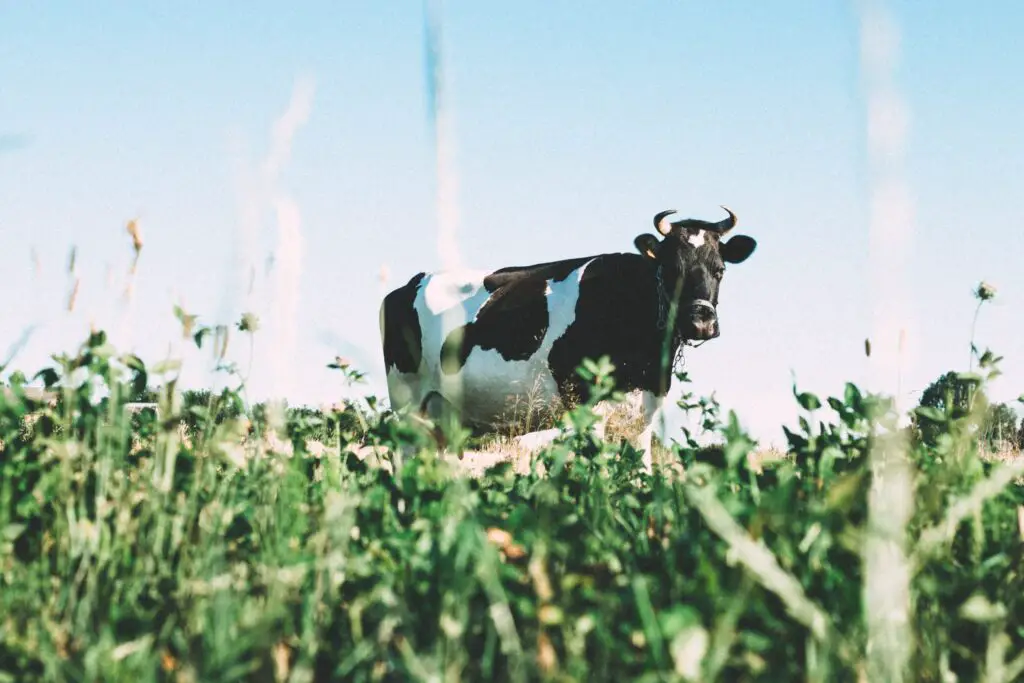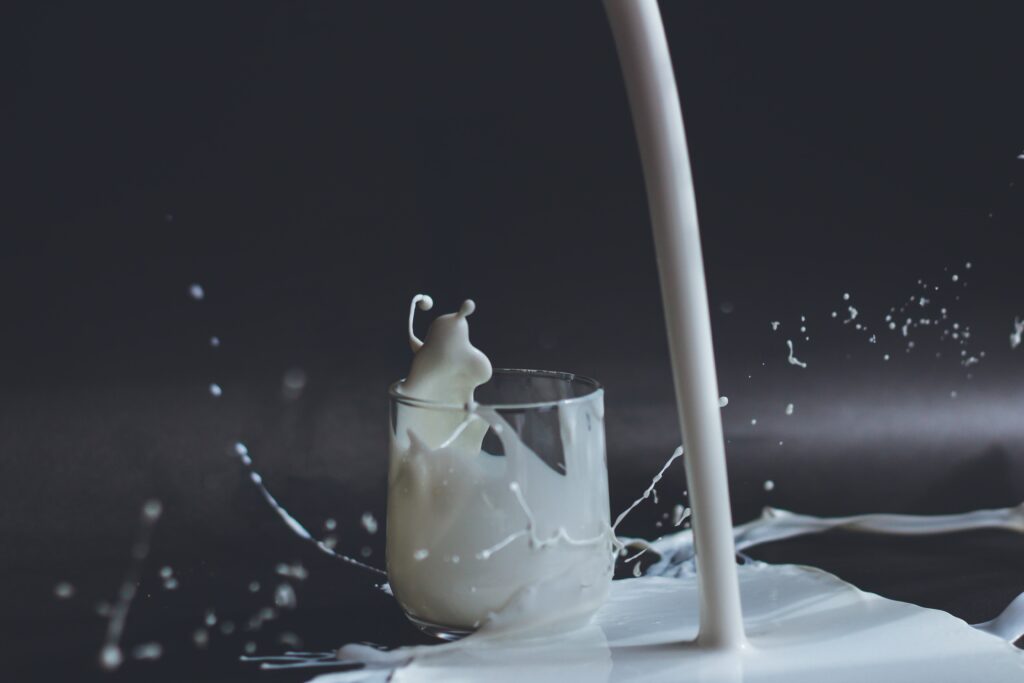Got milk?
The phrase may bring to mind a thick milk moustache and a tall glass of cold milk with warm cookies as an after school snack. Milk and other dairy products are now a common fixture of modern day meals but when did humans start drinking milk? And who was the first person to decide to try it?
When Was Cow’s Milk Discovered?
Cows were first domesticated 8,000 to 10,000 years ago.
The large, wild ancestors of modern cows were called Aurochs. Aurochs ranged throughout Asia, Europe, and North Africa. Early farmers and pastoralists domesticated these cows as a food source but it was a while before the first cow was milked as a source of human food.
Evidence of domesticated cows started to appear throughout Ancient Egypt and Northern India.
Either domesticated cattle spread from the Fertile Crescent throughout Eurasia or a separate domestication event took place in the area of modern-day India and Pakistan. The large Aurochs became the humped zebu (bos indicus) and the humpless European cattle (bos tuarus).

When Did Humans Start Drinking Cow’s Milk?
Humans first started drinking cow’s milk about 6,000 years ago.
Analysis of degraded fats on unearthed potsherds shows Neolithic farmers in Northern Europe were milking cattle for human consumption around 4000 BCE. However, dental scrapings of skeletons in Kenya and Sudan indicates that humans in Africa were also drinking milk around 4000 BCE.
It’s origins may be a bit fuzzy but humans have been drinking milk for thousands of years.
Who Was the First Person to Drink Cow’s Milk?
So who was the first person to milk a cow?
Like I said above, generally English/Northern European farmers are considered to be the first to drink cow’s milk. However, there is also evidence of communities in Kenya and Sudan started drinking cow’s milk around the same or maybe even earlier.
Humans may have started drinking milk around 4000 BCE but couldn’t digest lactose until about 1,000 years later.
The ability to digest lactose didn’t occur until around 3000 BCE. Babies are born able to digest lactose in their mother’s milk but the lactase, the enzyme needed to digest lactose, doesn’t always continue into adulthood. This genetic mutation called “lactase persistence.” Currently in Northern Europe and some populations in Africa and the Middle East more than 90% of people can digest lactose. It is less common in most of Africa, Asia and South America.
However, many societies rely on cow’s milk despite being unable to digest lactose.
One way around this is eating fermented dairy as it decreases the lactose. Dairy products such as butter and cheese also have less lactose than milk and butter and cheese making began fairly quickly after humans started milking cows. As early as 2500 BCA a Sumerian tablet depicts cow-milking and butter-making.

Why Did Human’s Start Drinking Cow’s Milk?
There are a variety of theories on why people started drinking cow’s milk.
However, the prevailing theory is that drinking milk began due to need. Milk was another source of nutrition in a world where food was not always plentiful. The fat, protein and calories in milk were beneficial additions to ancient diets. Milk may not have only been a source of nutrition but a source of hydration that was cleaner than available water.
It has been at least 6000 years since the first person milked a cow but it has certainly cemented itself a place on grocery store shelves.
If you’re feeling inspired, consider trying my Raspberry Cheesecake Mini Donuts or Homemade Rocky Road Ice Cream.






